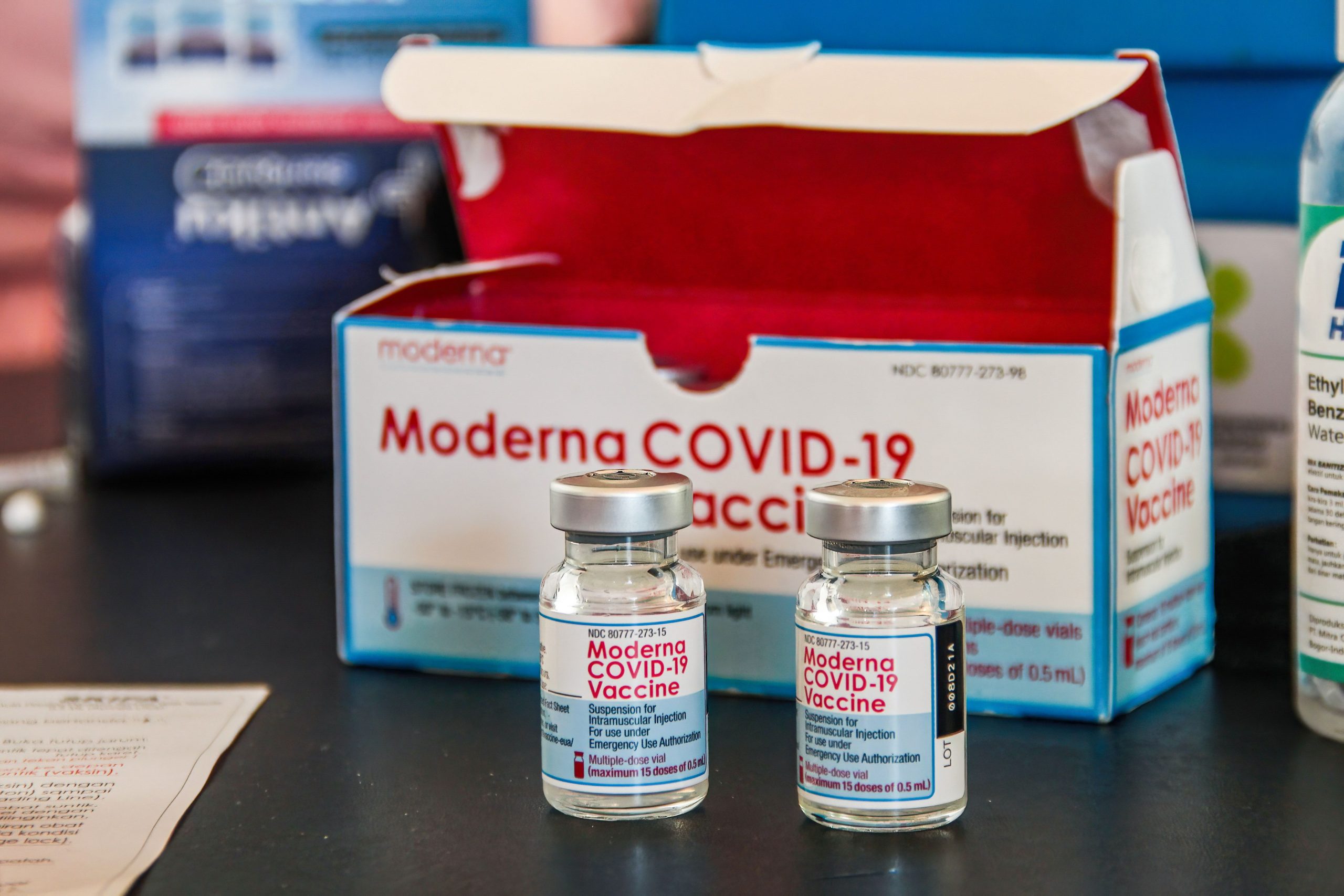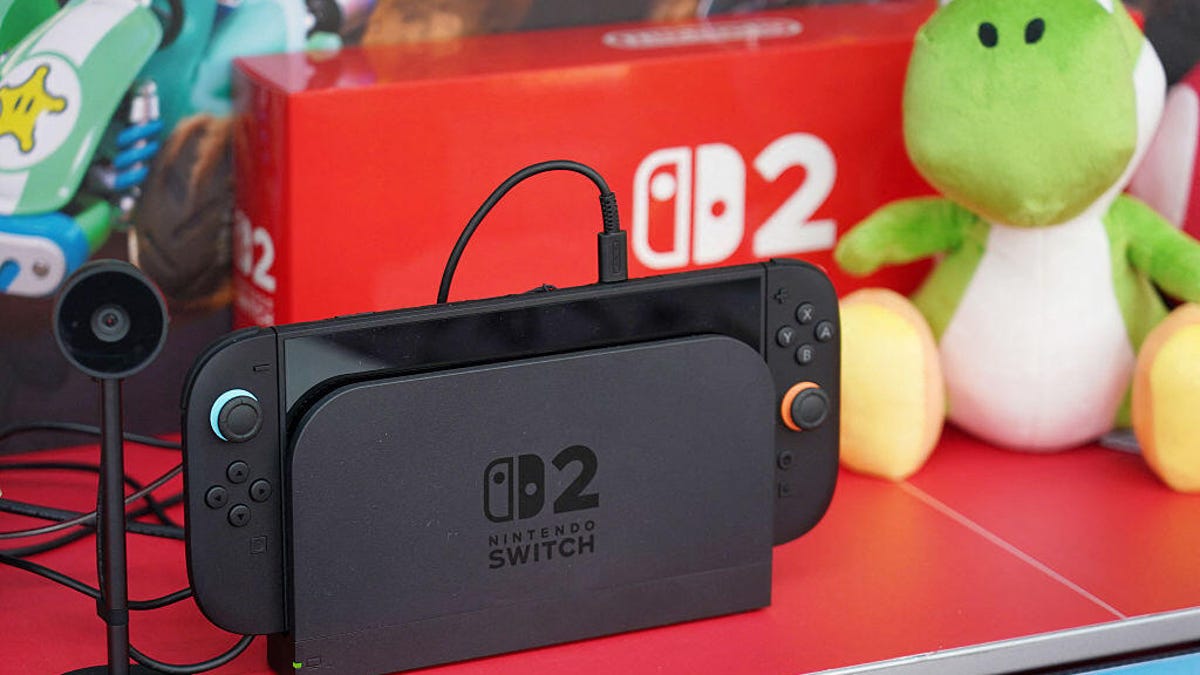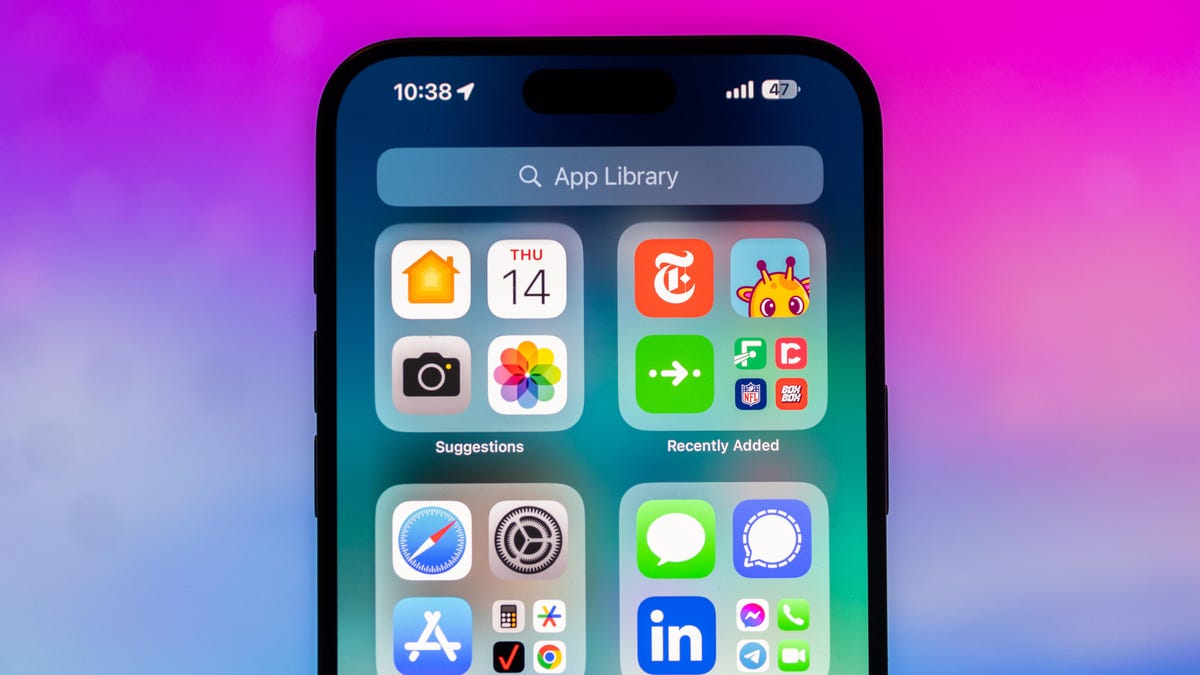Technologies
Moderna COVID booster: What to know about new omicron variant, side effects, CDC guidelines
If you’re age 18 or older, you can now get a Moderna booster dose if it’s been at least six months since your second shot.

The new omincron coronavirus variant is raising alarm bells around the world with fears about a new surge of COVID infections. In response, Moderna said it is taking a three-prong approach to ensure its COVID vaccine can guard against the new mutation.
If you’re 18 years of age and older, you now qualify for a Moderna booster shot. That goes for those fully vaccinated with the Pfizer, Moderna and Johnson & Johnson vaccines, too, because you can now mix and match vaccines from approved drug-makers.
Authorization for the Moderna booster — along with Pfizer and Johnson & Johnson booster shots and Pfizer vaccines for kids — comes at a time when the deadly and contagious delta variant has a lock on the US and as the new omincron mutation emerges in South Africa.
Epidemiologists worry about another wave of COVID-19 infections as cold weather drives people indoors and as the annual flu season kicks in, socking immune systems. It also comes as a new COVID variant emerges in South Africa.
The COVID-19 vaccines have proved to be highly effective in preventing hospitalization, and those who are unvaccinated are 10 times more likely to be hospitalized if infected. With the federal vaccine mandates, the Biden administration aims to counter the surge and put pressure on anyone who hasn’t been vaccinated. Antiviral drugs could also help.
Here’s what you need to know about the Moderna booster, including its side effects. For more on COVID-19, here’s the latest on COVID-19 vaccines for kids, what to do if you lost your vaccination card, the difference between a booster and a third dose, and what to know about breakthrough infections.
What is Moderna’s plan for its COVID vaccine and the new omincron variant?
In the US, the delta variant of COVID-19 — which is nearly twice as contagiousas earlier variants — accounts for more than 99% of current infections. All three vaccines authorized for use in the US —Moderna, Pfizer and Johnson & Johnson — are effective inguarding against infection from the delta variant, especially against severe disease.
A new COVID variant named omicron just found in South Africa is raising concerns among scientists. «It is something to watch,» said Maria Van Kerkhove,an infectious disease epidemiologist with the World HealthOrganization. «What we know is that this variant has a large number ofmutations. And the concern is that when you have so many mutations, itcan have an impact on how the virus behaves,» and that includesvaccines, Van Kerkhove said. With researchers just now examining thevariant, it’s not known how effective vaccines will be in guardingagainst infection.
To be ready for the new mutated virus, Moderna said it is taking a three-part strategy to be ready for the mutated virus:
1. Moderna said it’s testing a 100 microgram dose of its booster to see if it provides better protection against the omincrom. The Moderna booster authorized by the Centers for Disease Control and Prevention is a 50 microgram dose, half of what the CDC authorized for the first two shots of the Moderna vaccine.
2. The drug-maker is testing a COVID vaccine that could protect against several mutated strains of the COVID virus.
3. The company is working on an omicron-specific booster vaccine. Moderna said it could have a candidate of its micron-specific boosterin clinical testing in 60 to 90 days.
All adults are now eligible for the Moderna booster dose
As of Nov. 19, all adults — those age 18 and older — are eligible to get a booster shot of the COVID-19 vaccine. They qualify if it’s been at least six months since they’ve received their second dose of either the Moderna or Pfizer vaccine. Those who received the Johnson & Johnson vaccine are eligible for a booster dose after two months. Adults are encouraged to get whatever booster dose is available to them, even if that means mixing and matching vaccine boosters (more below).
What about side effects with the Moderna COVID booster shot?
According to the US Centers for Disease Control and Prevention, those who got the Moderna booster dose reported fewer reactions than they did after the second dose of the vaccine. In its study, the CDC found 95% of those who got Moderna for the first round of vaccine shots chose Moderna for the booster dose.
Yes, it’s safe to mix and match vaccine boosters
The US Food and Drug Administration has authorized mixing COVID-19 boosters, which in the US means Moderna, Pfizer and Johnson & Johnson. Anyone eligible for a booster can get any of the available brands of coronavirus vaccines. If you initially received Johnson & Johnson and it’s been two months or longer since you received the initial dose, you’ll be able to get the Moderna or Pfizer booster. If you received Moderna or Pfizer for your first two shots, you could pick any authorized vaccine — including J&J — if you qualify and it’s been six months or longer since your second shot.
What does the Moderna booster shot do?
A COVID-19 booster shot — whether from Moderna, Pfizer or Johnson & Johnson — tops off your immune response and guards against a breakthrough COVID-19 infection as the vaccine’s effectiveness decreases over time.
Recent studies of the Pfizer and AstraZeneca vaccines show that their effectiveness can begin to wane after six months. Moderna said early data suggests that those who received the Moderna vaccine in 2020 are showing a higher rate of breakthrough COVID infections than those vaccinated this year, suggesting the need for a booster to maintain high levels of protection.
Is the Moderna vaccine booster the same as the original two COVID-19 doses?
Yes, almost. As with Pfizer’s booster, the third Moderna shot will be the same vaccine as the first two doses, except it’ll be a half dose. To make your life simpler, Moderna is also working on a combination shot that includes this year’s flu vaccine and its COVID-19 booster vaccine, but that is not available right now.
Where can I get the Moderna booster shot?
According to the White House, boosters will be available at roughly 80,000 places across the country, including over 40,000 local pharmacies. Some 90% of Americans have a vaccine site within 5 miles of where they live. You can check Vaccines.gov to see which vaccines are available where, or call 800-232-0233 for vaccine information.
Is the Moderna COVID-19 booster shot free, or do I have to pay?
All booster shots will be free, regardless of immigration or health insurance status. However, depending on where you get your booster shot — for example, at a local pharmacy — you may be asked to log your insurance status. You may be asked to provide your insurance card information, including your name, date of birth and membership number. You will not be charged for your COVID-19 vaccine or booster shot.
Will I need a fourth COVID booster shot?
The CDC updated its guidance to say that next year, some immunocompromised people will be able to get a fourth COVID-19 booster shot. It’s unclear if other groups will need to get a fourth dose at this time.
For more on coronavirus treatments and vaccines, here’s what we know about monoclonal antibody treatments, the new federal vaccine mandates and why some people may not want the shot.
CNET’s Jessica Rendall contributed to this article.
The information contained in this article is for educational and informational purposes only and is not intended as health or medical advice. Always consult a physician or other qualified health provider regarding any questions you may have about a medical condition or health objectives.
Technologies
Need Gift Ideas? Google’s Holiday 100 Shopping List Includes Switch 2, Home Movie Projectors
You can shell out hundreds for a new gaming console or spend less on classic games and backpack charms.

The spooky season has just ended, and Google is already turning its attention to holiday shopping. The search giant just released its annual list of 100 top holiday gift ideas based on the hottest trends of 2025.
The Google Holiday 100 list is an annual shopping guide compiled from searches for various products conducted between May and September. Using that data, Google creates a catalog of the year’s top trending gift ideas across various industries, including tech, toys, fashion and wellness. You can view the entire Google Holiday 100 list here.
Don’t miss any of our unbiased tech content and lab-based reviews. Add CNET as a preferred Google source.
Nintendo Switch 2
This year’s breakaway technology hit was the Switch 2, Nintendo’s latest family-friendly video games console. Unsurprisingly, it appears on 2025’s Holiday 100 list. The console was released in June and has sold more than 10 million units thus far, with Nintendo hiking up sales expectations even among uncertain economic conditions and tariff pricing.
Google Pixel Watch 4
The Google Pixel Watch 4 is a standout wearable that made the Holiday 100 list. Its inclusion isn’t just Google stuffing its own product into a list. If you’re buying a gift for fitness-focused folks, CNET’s Vanessa Hand Orellana wrote that the latest iteration of Google’s smartwatch «hits a sweet spot between universally appealing design, seamless compatibility with the Android ecosystem, potentially life-saving safety features and robust health and fitness tracking.»
Red-light face masks
Your algorithm may have served you up a boatload of red light therapy content from health and beauty influencers this year. Search volume for red light masks has spiked in the past few months, so the LED masks have been included in the Holiday 100 buying guide this year. Just make sure to purchase one of the best FDA-approved masks.
Movie projectors to backpack charms
If you’re looking for gifts across other categories, Google has some top 2025 searches for big and small. Home theaters are apparently in this year, as searches for movie projectors spiked by a whopping 945%. Searches for backpack charms also hit an all-time high this year, so those are a safe bet for stocking stuffing for any young kids.
Checkers (the actual board game)
Even though many gifts given out at Christmas this year will surely be high-tech gadgets and accessories, the board game of checkers is also on the list. There’s always room for the classics.
As you prepare for the Herculean task of yearly holiday shopping, Google’s Holiday 100 is a good place to start. But if you’re looking to beat the crowd on the best tech deals around, CNET is already collecting pre-Black Friday deals.
Technologies
Look Up Tonight to Spot November’s Supermoon, the Brightest Moon of 2025
Has the moon been looking brighter and bigger to you for the past few days? Here’s why this month’s supermoon is even more super.

It’s already a great month for skygazers, with a trio of meteor showers and the return of the northern hemisphere winter constellations. On Tuesday night, it also features the second of four supermoons in a row. This month’s supermoon will happen on Nov. 4-5, and November’s beaver moon is special because it’ll be the brightest full moon of 2025.
In addition to being a supermoon, November’s full moon is known as the beaver moon. There is some debate as to why it was named this way. Some believe that this was the best time of year in the old days to set beaver traps to get pelts for winter clothing. Others believe that it coincides with the busiest part of the year for beavers, who are now stocking their lodges with supplies for the upcoming winter.
Here’s what time it’ll look its biggest and brightest, and what else you need to know about the November supermoon.
Don’t miss any of our unbiased tech content and lab-based reviews. Add CNET as a preferred Google source.
The brightest supermoon: When’s the best time to see it?
The moon will reach peak illumination at 8:19 a.m. ET on Nov. 5, making the evening of Nov. 4 and the morning of Nov. 5 the best times to view the moon.
Since moon phases shift slowly, the moon will appear almost full for nearly a week. If you are unable to view the full moon on its best night due to weather or other reasons, you can still see a mostly full moon at any point from Nov. 3 to Nov. 8.
For all of those days, the moon will be measurably brighter in the night sky compared to any other full moon in 2025. The reason for this is because of the moon’s elliptical orbit. Since it’s not a perfect circle, the moon’s 27.3-day journey around the Earth brings it closer to us on some days, a phenomenon known as perigee. If there is a full moon during this time, it’s branded as a «perigean full moon,» which you may know better as a supermoon.
Not all supermoons are equal, and November’s will be a little more special than others. According to The Farmer’s Almanac, the beaver moon will be a scant 221,817 miles away from Earth, making it the closest full moon of the year. That means it’ll be the biggest and brightest of the year.
In practice, the differences are fairly minor and likely won’t be visible to the naked eye when compared side by side to other supermoons. A supermoon is only about 7% larger than a regular full moon. According to NASA, the biggest difference is when comparing a supermoon to a micromoon, where a supermoon will be about 14% larger and 30% brighter. So, if you notice that your backyard patio is lit up more than usual, it’s because of the supermoon.
Also due to the moon’s orbit, November will also bring a micro new moon, which means the moon will be as far away from the Earth as it can get — a phenomenon known as apogee. November’s new moon occurs on Nov. 20, but you won’t be able to see it.
Technologies
Stay Informed About Your Flights This Holiday Season With Your iPhone’s Tracker
Your iPhone is hiding a flight tracker. Here’s how it works.

Thanksgiving is only a few short weeks away and if you plan on flying during the holiday season, keeping up-to-date on changes to your flights is crucial. Airports can be hectic during any holiday, but with the government shutdown continuing, flights are liable to change or be cancelled more often.
Luckily, it’s never been easier to get up-to-date information about your flight. For starters, your airline probably has an app, and if not, you can check its website. If you’re in a hurry, you can Google the flight number. Or you can just use your iPhone’s built-in flight tracker that’s sneakily tucked away.
That’s right: Your iPhone has a flight tracker that you may have never known about. It’s there for when it’s needed. Below, we’ll show you have to access it in not one, but two places, so you never have to go hunting for your flight info elsewhere again.
Don’t miss any of our unbiased tech content and lab-based reviews. Add CNET as a preferred Google source on Chrome.
For more on the iPhone, check out everything Apple announced at WWDC 2025.
How to track your flight via iMessage
Before we start, there are a few prerequisites you must meet:
- Make sure iMessage is enabled (it doesn’t work with SMS/MMS).
- You’ll need your flight number somewhere in your text messages, whether you’ve sent that information to someone (even yourself) or it’s been sent to you.
- The flight number must be sent in this format: [Airline] [Flight number], for example, American Airlines 9707.
Launch the native Messages app on your iPhone and open the text message thread that contains your flight information. You’ll know the flight tracker feature works when the text with the flight information appears underlined, which means it’s actionable and you can tap on it.
If your flight is still several months away or it’s already passed, you might see a message that says, «Flight information unavailable.» You might also see another flight that’s not yours because airlines recycle flight numbers.
You can check your flight status from Spotlight Search, too
If getting your flight information from Messages wasn’t easy enough, you can also grab the details right from your iPhone’s home screen by swiping down and adding your flight number into Spotlight Search. Even better, this works with Spotlight Search on your Mac computer, too.
How to access the hidden flight tracker
Although the airline name/flight number format highlighted above is the best way to go, there are other texting options that will lead you to the same result. So let’s say we stick with American Airlines 9707, other options that may bring up the flight tracker include:
- AmericanAirlines9707 (no spaces)
- AmericanAirlines 9707 (only one space)
- AA9707 (airline name is abbreviated and no space)
- AA 9707 (abbreviated and space)
I would suggest you keep the airline name spelled out completely and add a space between the two pieces of information — like in the previous section — because for some airlines, these alternative options may not work.
Real-time flight tracking
Once everything is set, tap on the flight information in your text messages. If the feature works correctly, you should see the following two options appear in a quick-action menu:
- Preview Flight: View the flight’s details. Tap this to view more information about the flight.
- Copy Flight Code: Copy the flight code to your clipboard (in case you want to send your flight details to someone else via text or email).
If you select Preview Flight, at the top of the window, you’ll see the best part of this feature: a real-time flight tracker map. A line will connect the two destinations, and a tiny airplane will move between them, indicating where the flight is at that exact moment.
Underneath the map, you’ll see important flight information:
- Airline name and flight number
- Flight status (arriving on time, delayed, canceled, etc.)
- Terminal and gate numbers (for arrival and departure)
- Arrival and departure time
- Flight duration
- Baggage claim (the number of the baggage carousel)
If you swipe left on the bottom half of the flight tracker, you can switch between flights, but only if there’s a return flight.
For more travel tips, don’t miss our test on whether AI can help you fly more sustainably.
-

 Technologies3 года ago
Technologies3 года agoTech Companies Need to Be Held Accountable for Security, Experts Say
-

 Technologies3 года ago
Technologies3 года agoBest Handheld Game Console in 2023
-

 Technologies3 года ago
Technologies3 года agoTighten Up Your VR Game With the Best Head Straps for Quest 2
-

 Technologies4 года ago
Technologies4 года agoVerum, Wickr and Threema: next generation secured messengers
-

 Technologies4 года ago
Technologies4 года agoBlack Friday 2021: The best deals on TVs, headphones, kitchenware, and more
-

 Technologies4 года ago
Technologies4 года agoGoogle to require vaccinations as Silicon Valley rethinks return-to-office policies
-

 Technologies4 года ago
Technologies4 года agoOlivia Harlan Dekker for Verum Messenger
-

 Technologies4 года ago
Technologies4 года agoiPhone 13 event: How to watch Apple’s big announcement tomorrow
